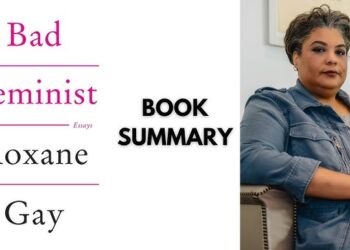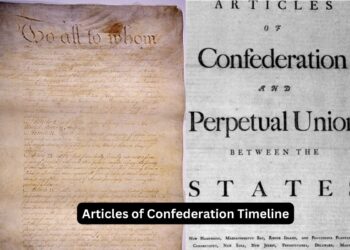Scrap Irons of Painful Mercy Essay by Nick Sturm
Scrap Irons of Painful Mercy Essay by Nick Sturm-“Scrap Irons of Painful Mercy” by Nick Sturm presents a compelling examination of memory, trauma, and the act of writing, drawing upon personal experiences and literary analysis to explore these themes. Sturm begins with a vivid recollection of visiting the Hiroshima Peace Memorial Museum, an experience that prompts deeper reflections on how individuals process and convey traumatic events through artistic expression..Scrap Irons of Painful Mercy
Essay by Nick Sturm
Throughout the essay, Sturm skillfully interweaves personal anecdotes, literary critique, and historical context to investigate how artists and writers have grappled with the subject of trauma. He references the work of Susan Sontag and Akira Tatehata, among others, to illustrate various approaches to depicting suffering and its aftermath.Scrap Irons of Painful Mercy Essay by Nick Sturm
In addition to analyzing the work of others, Sturm reflects on his own challenges and ethical considerations as a writer. He acknowledges the inherent limitations of language in capturing the complexity of human suffering while emphasizing the importance of bearing witness to others’ pain and preserving their stories.
Also Read-
- Writing Inside the Hole Essay by Leon pradeau
- What’s Wrong with This Picture Essay by Kenny Fries
- A Brawl of Angels Essay by Joyelle McSweeney
At the heart of Sturm’s argument is the belief in the transformative power of storytelling to foster empathy and understanding across cultural and historical divides. He contends that while words may never fully convey the depth of human suffering, they can serve as a vehicle for healing and reconciliation in a world marked by violence and injustice..Scrap Irons of Painful Mercy Essay by Nick Sturm
In “Scrap Irons of Painful Mercy,” Nick Sturm offers a thought-provoking exploration of the role of literature in confronting trauma and the ethical responsibilities of writers. Through his nuanced analysis and introspective reflections, Sturm encourages readers to consider the profound impact of storytelling on our understanding of collective human experiences..Scrap Iro
Scrap Irons of Painful Mercy Themes
- Memory and Trauma: One of the central themes is the exploration of memory and trauma, particularly in the context of historical events such as the atomic bombing of Hiroshima. Sturm reflects on how individuals and societies grapple with traumatic experiences, both personally and collectively, and how these memories shape identity and perception.
- Ethics of Representation: Sturm delves into the ethical considerations involved in representing trauma through art and literature. He discusses the challenges of depicting suffering without exploiting or sensationalizing it, drawing on the insights of thinkers like Susan Sontag to explore the complexities of bearing witness to others’ pain.
- The Power of Writing: Writing itself emerges as a significant theme, with Sturm contemplating the ways in which literature can serve as a means of processing trauma and fostering empathy. He reflects on the role of the writer in capturing the nuances of human experience and the potential for storytelling to bridge cultural and historical divides.
- Empathy and Understanding: Throughout the essay, there is a strong emphasis on the importance of empathy and understanding in navigating the aftermath of trauma. Sturm suggests that engaging with difficult subjects through literature can cultivate compassion and promote healing, fostering connections between individuals and communities.
- Art as Witness: Another theme that emerges is the idea of art as a form of witness to history. Sturm discusses how artists and writers can serve as chroniclers of trauma, preserving the stories of those who have suffered and ensuring that their experiences are not forgotten or overlooked.
Conclusion:
In “Scrap Irons of Painful Mercy” by Nick Sturm, the exploration of memory, trauma, and the act of writing culminates in a poignant reflection on the ethical responsibilities of storytellers and the transformative power of literature. Through personal anecdotes, literary analysis, and historical context, Sturm navigates the complexities of representing suffering while emphasizing the importance of empathy, understanding, and bearing witness to the pain of others.
The essay underscores the role of art as a means of processing trauma, fostering connections between individuals and communities, and preserving the stories of those who have endured hardship. Ultimately, Sturm invites readers to consider the profound impact of storytelling on our collective understanding of human experience and the potential for literature to promote healing and reconciliation in a world marked by violence and injustice.
FAQ:
1. What is the central message of “Scrap Irons of Painful Mercy”?
The central message revolves around the exploration of memory, trauma, and writing, emphasizing the ethical responsibilities of storytellers and the potential for literature to foster empathy and understanding in the face of human suffering.
2. How does Sturm navigate the ethical complexities of representing trauma?
Sturm discusses the challenges of depicting suffering without exploitation or sensationalism, drawing on insights from thinkers like Susan Sontag to explore the nuances of bearing witness to others’ pain.
3. What role does literature play in processing trauma according to the essay?
Literature is portrayed as a powerful tool for processing trauma, fostering connections between individuals and communities, and preserving the stories of those who have endured hardship.
4. How does Sturm view the transformative power of storytelling?
Sturm emphasizes the potential for storytelling to cultivate empathy, bridge cultural and historical divides, and promote healing and reconciliation in a world scarred by violence and injustice.
5. What does the essay suggest about the importance of empathy and understanding in navigating trauma?
The essay underscores the importance of empathy and understanding in navigating the aftermath of trauma, suggesting that engaging with difficult subjects through literature can foster compassion and promote a deeper understanding of human experiences.

















